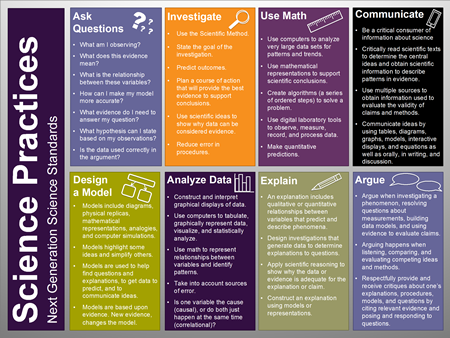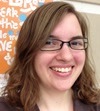Several years ago, CAST was collaborating with middle school teachers in thinking about how the Universal Design for Learning (UDL) framework might help maximize student learning in science. One of the teachers mentioned that helping students write scientific reports was one of her biggest challenges. That idea turned into a three-year research and development grant funded by the Office of Special Education Programs (OSEP) and the NEC Foundation, which resulted in a free interactive web-based instructional tool called Science Writer.

Science Writer is designed to lead students through the process of developing a scientific report. Research-based instructional supports are embedded into Science Writer, including:
- The report-writing process is separated in manageable components
- Steps of the writing process are scaffolded
- An organizational structure for report writing is provided
- Sentence starters help initiate writing throughout
Embedded animated coaches, Max, Sam, and Eko provide strategies and models as students move through the process of writing a scientific report.
Science Writer is helpful for teachers who have been trained to teach science and may not have much experience teaching writing. It also helps students who may struggle with “writing like scientists” by guiding them through the process of writing scientific reports as required by The Next Generation Science Standards (NGSS). These standards, now aligned with the Common Core State Standards (CCSS) for writing, acknowledge that writing is a critical skill for scientists who need to share their knowledge about concepts and findings. (See Appendix M, NGSS).
Stacey Reed, a seventh grade life science teacher in Wayland, Massachusetts, has been using Science Writer for four years and shares her implementation of Science Writer in her classroom:
"While perusing the NGSS, I was energized by the call to slow down, get students to design experiments, ask good questions, and communicate. I created a chart summarizing these practices.

Devoting time to laboratory experiences promotes these science practices, but the resulting writing process is a daunting prospect, especially with students in my classes who struggle with reading and writing. Lab report writing is a very specific type of technical writing, integral to the scientific field, that requires organization. It is not a genre that students read on their own time; therefore, they have few models on which to base their own writing.
Science Writer makes lab report writing far more accessible using UDL strategies, giving students a chance to choose the level of assistance on each task required to create the report. One student might find success when Science Writer chunks the tasks into more manageable pieces. Another student may write conclusions well, but is puzzled by what an analysis section entails. The Science Writer coaches provide model texts for students to learn what is expected.
For instance, a reluctant writer was excited that her gummy bear osmosed with water to 168% of the original volume. We opened Science Writer, and her hand reflexively shot up, asking what she should write. She could retell the directions, so she didn’t need the Eko coach. I suggested she check in with Sam to see a model. A penguin popped up showing his introduction and modeling his thinking process. While she was independently writing a quality introduction, I was able to coach another student who was deciding between sentence starters.
Once students completed the lab report, they displayed more ownership over the ideas they discovered in the lab. As we continue to use the program, I watch students grow beyond the need for the scaffolding supports as they develop a clearer understanding of the expectations of scientific writing and develop science practices."

 Peggy Coyne is a Research Scientist at CAST, Inc.
Peggy Coyne is a Research Scientist at CAST, Inc.
Stacey Reed is a seventh grade life science teacher in Wayland, MA.
This article is part of a series from the International Reading Association Technology in Literacy Education Special Interest Group (TILE-SIG).